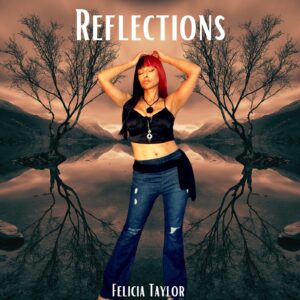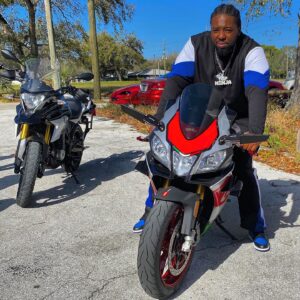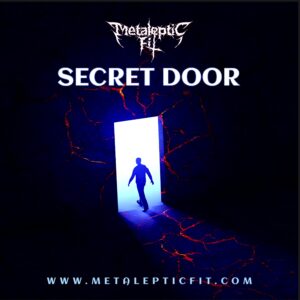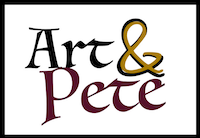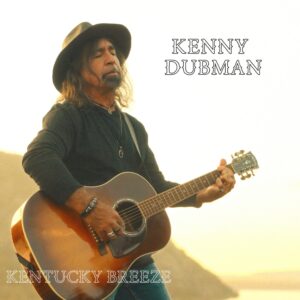
(L-R) Joni Mitchell, David Crosby and Eric Clapton hanging out and sharing music in ‘Laurel Canyon.’
Henry Diltz
For connoisseurs of documentaries about ’60s and ‘70s rock music and musicians, this is becoming a Golden Age. Recent offerings exploring the music and the musicians that defined that era in popular culture include Echo In The Canyon, David Crosby: Remember My Name and Linda Ronstadt: The Sound Of My Voice, to name a few.
Joining the band of insightful retrospectives of that epoch is the two-part docu-series Laurel Canyon, from award-winning filmmaker Alison Ellwood, whose previous work includes another two-parter about the rock band The Eagles. The docu-series is executive-produced by the Kennedy/Marshall Company, Amblin Television, Warner Music Group and Jigsaw Productions; and Jeff Pollack, and will be available on EPIX and EPIX NOW, the network’s new streaming service, which is available for download in the App store for iPhone, iPad and Apple TV and in Google Play for Android phones and tablets.
Ellwood turns her lens on many of the musicians that lived and played in this rustic canyon community of Los Angeles sandwiched between glitzy Hollywood and the vast suburbia of the San Fernando Valley during a period when folk music was morphing into pop and rock music. It also was a time of political and social upheaval in the country and the music reflected those changes.
Part 1 of the feature-length docu-series, premieres on EPIX Sunday May 31 at 9 p.m.ET/PT, followed by Part 2 on Sunday June 7. It features an intimate portrait of the artists who created a music revolution through a plethora of rare and newly unearthed footage and audio recordings. It also features all-new, original interviews with Jackson Browne, Don Henley, Michelle Phillips, Graham Nash, Linda Ronstadt, Bonnie Raitt, Roger McGuinn and others.
Speaking via Zoom from her place in northern Massachusetts, Elwood discussed her inspiration for Laurel Canyon, amassing the rare material, interviewing the subjects and bringing viewers back to a place that was mythical and momentous.
Angela Dawson: You’ve made other documentaries on musicians, including one on The Eagles, and you revisit some of the members of that band in this. So, did that documentary inspire you to make Laurel Canyon?
Alison Ellwood: The Laurel Canyon story actually is something I’ve been interested in for over 20 years. Back when I lived in L.A., I was trying to do it. I was fascinated with The Doors, and realized they had all these connections to Laurel Canyon, along with other artists up there. Back then, music rights were so dispersed and so difficult to license. It was going to be outrageously expensive, if not impossible. So, I put it aside. It came back to me through Jigsaw, which was thrilling. The connection through The Eagles thing that was great was getting to know (photographer and folk musician) Henry Diltz, who I met while making that film. While I was working with him on History Of The Eagles, I happened to see all these photographs that he had done of all these other artists from the Laurel Canyon scene. So, when this project came back to us, his was one of the first calls I made. I said, “Hey, would you be interested,” and he was totally onboard, which was great.
Dawson: He kind of serves as the tour guide through the docu-series.
Ellwood: Yeah.
Dawson: How did you find the rare audio records and footage that are interspersed through the series?
Ellwood: We had an amazing team of people researching the material. We had stuff coming in up until the very last minute. We reached out to other people, crowdsourcing, trying to find stuff. It was a very long process of digging into stuff. Obviously, having Henry’s photographs as a starting place and Nurit Wilde’s photographs was huge. Once people knew we were working with Henry, they were much more willing to share things with us.
Dawson: How easy or difficult was it getting these music artists to participate?
Ellwood: Some people took a little longer to get than others. But, generally, they were very enthusiastic about participating, especially when they decided they didn’t have to do an on-camera interview. It was audio only. You get a much more intimate interview that way. There wasn’t any pushback.
We weren’t able to get original interviews with Joni (Mitchell) or Neil (Young), which is a shame, but we pretty much knew that was a big ask going into it. Carole King would have been nice to include in the series but other than that, everybody was really excited.
Dawson: Did you set out to do this in two parts? Part 1 is about the lighter side of the ‘60s Laurel Canyon scene, and Part 2 gets into the darks aspects like the Manson murders and drug abuse that arose.
Ellwood: We originally wanted to do it as a three-part series, but for financial reasons, we had to do it two parts. Once we knew it was going to be done in two parts, and we knew where the dividing point was going to be, it seemed like a natural point.
The thing about Part 1 is that it seems more happy, naïve, and all that but the undertone to everything was that the Vietnam War was raging and these artists were all draft age and that was looming large over everyone. The awareness of what was happening around them was becoming greater, and the music changed as a result. Kent State happens and Neil Young writes Ohio, which is much different from (The Mamas and the Papas’ California Dreamin’).

Linda Ronstadt, seen here in February 1968, is one of the subjects of the music docu-series “Laurel … [+] Canyon,” premiering Sunday May 31 on EPIX.
Henry Diltz
Dawson: What was the holy grail for you in terms of materials for this?
Ellwood: My fear going into it was that I didn’t want it to be an anthology: one artist after another after another. We wanted to find organic ways to link them together. Whenever we found those links, we felt like, “OK, we’ve got this.” Sometimes the links are surprising. One of them is that Alice Cooper was part of that scene. He was connected to the scene through The Monkees, who were an integral part of the scene and very much respected by the artists there. So, finding those connections was the challenge, but also the fun of it.
Dawson: Viewers may be surprised to find out that Stephen Stills and Peter Tork were roommates.
Ellwood: Yeah, and Stephen Stills might have been one of The Monkees if he hadn’t had that snaggletooth.
Dawson: What was the significance of the green Karmann Ghia driving through the hillside in Part 1 and the red convertible in Part 2?
Ellwood: Clearly, we were shooting those contemporaneously; we weren’t trying to fake that it’s old footage. We were just trying to convey being in the moment in the period car. The green car is Part 1 and the red car is Part 2. And we play a lot with the (vintage broadcasts on) radio because radio was a big part of the story too.
Dawson: There are some similarities between the social concerns of young adults today and young adults of that period, so even if some of your younger viewers watching this might be unfamiliar with the artists and music in Laurel Canyon, they may connect with the period in the sentiments of the music those musicians were making.
Ellwood: Sure. Anytime young people come together with the goal of being creative and supportive of one another, that’s so great. That’s a great message for kids to hear and I don’t think they hear it enough these days and we certainly need it now more than ever. I keep seeing these Zoom musical things that kids are doing all over the world, and CSN songs are being used. The music still speaks to us.
Dawson: You’ve got a documentary coming out this summer about the ‘80s all-female band, The Go-Gos. What can you say about that?
Ellwood: They actually started on the heels of the Lauren Canyon scene. The Laurel Canyon docu-series goes from ’65-’75, and The Go-Gos—they didn’t hit it until the ‘80s—but they formed in ’78. So, it just kind of carries on. A lot of those punk artists were living in the canyon because the rockers had left and there were still cheap rents. But that isn’t part of our story with The Go-Gos. The Go-Gos was a different approach. Their music is very different. It’s a punk scene. There’s a lot of focus on the punk scene. I don’t know if a lot of people realize The Go-Gos started out as a pretty hard-core punk band. For that documentary, we did do on-camera interviews. For doing (a documentary) on a single band, it makes a lot more sense because you’re going back to the same people over and over again, not hundreds of different people (being interviewed). Of course, they’re a little bit older but they are—all five of them—still drop-dead gorgeous. That made that easy.
Dawson: Are there other types of music or musicians you’d like to explore in a documentary? And where do you see yourself going, creatively?
Ellwood: As long as there’s an interesting story and I can learn something, I’m intrigued by that. I like learning. I don’t have any new music projects lined up. There are some things on the back burner but nothing with a green light yet. I love music stories because they’re rich in characters. The music, obviously, is a great thing to work with but there’s always inherent drama, somehow, because artists are volatile, especially in a band. You get all these volatile artists in a band. The Go-Gos were very volatile.

